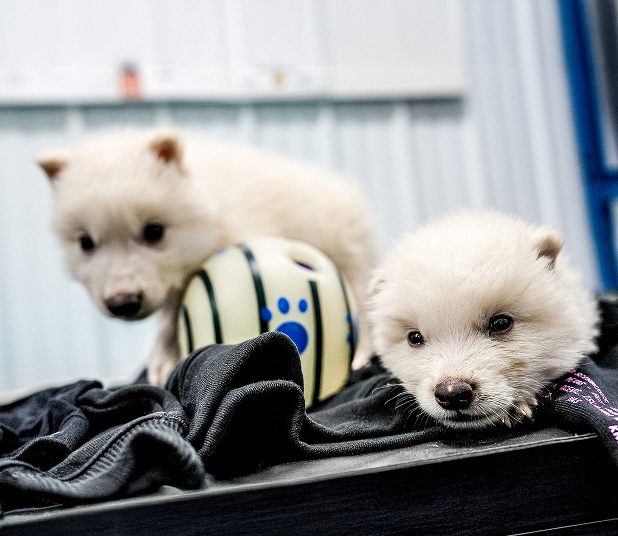Hold onto your hats, Britain! Those massive, mythical-sounding dire wolves from Game of Thrones? Turns out, they might not be so mythical after all. American scientists at Colossal Biosciences, a company dedicated to bringing back extinct creatures, have announced the birth of three puppies with the genetic characteristics of the prehistoric dire wolf ( Aenocyon dirus).
Now, before you start picturing wolf-sized hounds roaming the Yorkshire moors, there’s a bit of science to unpack. These aren’t exactly the dire wolves that roamed the Earth over 12,000 years ago. Colossal Biosciences used a bit of genetic wizardry, analysing DNA from dire wolf remains and then modifying the genes of gray wolves. Think of it as a very posh makeover, giving gray wolves some of the key features of their extinct cousins.
The result? Three adorable (and rather large) puppies named Romulus, Remus, and Khaleesi. These little chaps boast the size and thick, light fur associated with dire wolves, a far cry from your average gray wolf. They are currently residing in a secure, undisclosed location, probably getting up to all sorts of puppy mischief.
Is it really a dire wolf?
That’s the million-dollar question, isn’t it? While Colossal Biosciences is understandably chuffed with their achievement, calling it the “first successful de-extinction,” some scientists are a tad more cautious. They argue that these are essentially modified gray wolves, only superficially resembling the extinct species.
Beth Shapiro, Colossal’s Chief Science Officer (and clearly a woman who knows her wolves), puts it this way: “It is a dire wolf. It doesn’t look like a gray wolf.” She’s focusing on the morphology, which is a fancy way of saying “what it looks like.” If it looks like a dire wolf, according to her, it’s close enough.
Why bring back the dire wolf?
Aside from the sheer “wow” factor, there’s a serious side to all this. Colossal Biosciences believes that these de-extinction technologies could be crucial for protecting endangered species. They’re already working on saving the critically endangered red wolf, and the lessons learned from the “dire wolf project” could be vital.
Plus, let’s be honest, who wouldn’t want to see a bit of Game of Thrones come to life? It’s a proper bit of science fiction turned reality, and that’s always exciting.
What’s next?
Colossal Biosciences isn’t stopping at dire wolves. They’ve got their sights set on bringing back the woolly mammoth, the Tasmanian tiger, and even the dodo. It’s a bold vision, and one that’s sure to keep the scientific community (and the rest of us) on the edge of our seats.
So, while we might not be seeing dire wolves in British parks anytime soon, this is a cracking example of science pushing the boundaries of what’s possible. And who knows, maybe one day we’ll have mammoths roaming the Scottish Highlands. Now that would be a sight.










